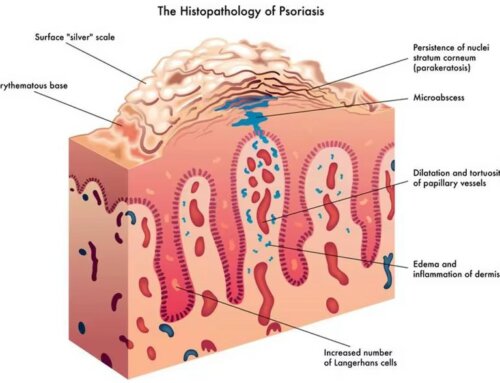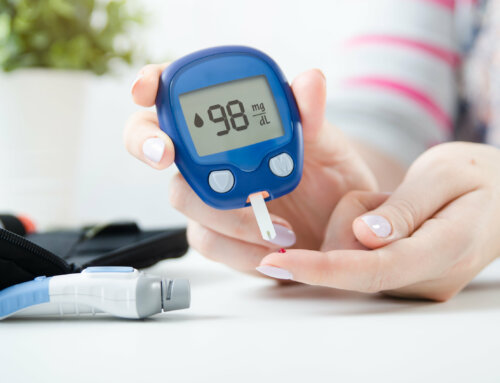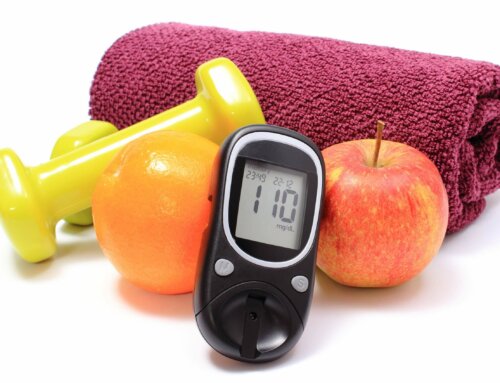I often consult with patients who are given diagnoses that they are unfamiliar with. They are too afraid or unsure to ask their health care provider what the definition means. Sometimes even the explanations are misunderstood. I wanted to review some common diabetes complications which may apply to you. My goal is to keep it simple and give you ideas to help prevent or slow these complications. These specific problems are involved with nerve endings, which are related to elevated blood sugars for an extended period of time.
Retinopathy – Approximately 40-45% of people with type 1 or type 2 diabetes have some form of retinopathy.
- What – It is a complication related to the back of the eye, called the retina. The small blood vessels of the back of the eye are affected and can result in blindness if not addressed.
- Why – Due to elevated long term blood sugars, the small blood vessels that feed the retina are eventually blocked and the blood supply is cut off. The body tries to make new blood vessels which are weak, leak blood and eventually cause scar tissue or possible retinal detachment.
- Risks – Having elevated blood sugars with an A1C consistently over 7%, elevated and untreated hypertension, smoking and high lipid levels are all risk factors.
- Symptoms – There may be no visual changes or symptoms at all. Do pay attention to changes which include: blurry, spotty or hazy vision. It may involve color changes, poor night vision, flashes of light, cobwebs, and dark strings of blood, floaters or empty areas of vision. It usually affects both eyes. There are 2 types. NPDR (non-proliferative diabetic retinopathy) is a milder form. It involves weakened blood vessels which causes swelling leading to macular edema. PDR (proliferative diabetic retinopathy) is a more serious type that involves the growth of abnormal new blood vessels. Diabetic retinopathy may also increase your risk of other eye issues including vitreous hemorrhage, retinal detachment, glaucoma or cataracts.
- Screening – The best screening tool is an eye dilatation at least one time a year, or as directed by your physician. More advanced tests may be ordered – including fluoresein angiography.
- Treatments – Treatment depends on the extent of the problem but will usually include laser therapy performed in your physician’s office. Laser treatments help to slow, shrink or stop the bleeding of the weak vessels in the back of the eye. A vitrectomy may also be performed to remove blood from the middle of the eye. Newer medications are often injected directly into the eye to shrink fragile abnormal blood vessels.
- Prevention – Blood sugar, blood pressure and cholesterol management is the best prevention. Use a healthy food plan with fresh fruits and vegetables, exercise moderately and do not smoke. Wear protective sunglasses when outside and consider an eye vitamin/mineral supplement.
Peripheral neuropathy – Up to 50% of people with diabetes type 1 or 2 will be affected by peripheral neuropathy.
- What – It is the involvement of nerve endings in the hands, arms, legs and feet.
- Why – The elevated blood sugars cause the nerve endings to become damaged and lose to ability to give or receive signals. The walls of the blood vessels which carry nutrients and oxygen are weakened.
- Risks – Elevated blood sugars for long periods of time, elevated blood pressure and lipids increase your risk. Genetics, nerve inflammation, smoking and alcohol abuse also increase your risk.
- Symptoms – Symptoms may include pain, numbness, tingling, burning, a crawling sensation, muscle weakness, a change in temperature either hot or cold or extreme sensitivity to touch. These symptoms can increase the risk of foot problems and amputations.
- Screening – Screening tests usually include a simple mono-filament test to look at sensation. If problems are noted, further testing may include nerve conduction studies as well as an EMG, which looks at muscle electrical discharge.
- Treatment – Treatment can include biofeedback or acupuncture, as well as medications (including those for pain relief). Some physicians prescribe anti-depressants (including Cymbalta) or anti-seizure medicines (including Gabapentin). Creams containing capsaicin (pepper) may dull the pain. Lidocaine patches may offer relief as well. There are trials using stimulation machines which are being offered to patients – with mixed results.
- Prevention – The best prevention includes foot screenings at every 3 month visit. Check your own feet daily for any changes. Keep your feet clean and moisturized except between the toes. Wear socks and shoes (including slippers) in the house and pool shoes in the water. Visit the podiatrist if you have problems – including in-grown toe nails, sores, corns, open wounds or fungus. Have an exercise plan in place. Keep your A1C around 7% or less. Watch blood pressure, lipids as well as moderation of alcohol. Do not smoke.
Nephropathy is the leading cause of chronic kidney disease in the United States. Up to 40% of people with type 1 or 2 diabetes develop nephropathy.
- What – It is the damage to the filtering system of the kidneys.
- Why – The nephrons have tiny blood vessels which remove waste from the blood and send it to the urine. Because there is damage, the system does not work and the kidneys become less effective.
- Risks – Elevated blood sugars for a long period of time and uncontrolled blood pressures greatly increase the risks of kidney problems. It is more common in minority groups including Native Americans, African Americans and Hispanics – especially Mexican Americans.
- Symptoms – There may be no symptoms at all. There may be swelling in the feet and legs, face and eyes, exhaustion, lack of appetite, nausea and change in skin coloring.
- Screening – The screening is a simple urine test which looks for albumin or protein. Protein is a large molecule which should not be present in urine. A GFR blood test is also performed. As the GFR declines, there is more risk of kidney disease. A visit to a nephrologist (kidney specialist) is indicated with a reduction in kidney function.
- Treatment – As with other nerve ending complications, blood sugar management (an A1C of 7%) is encouraged. Blood pressure must be controlled, and even when a patient does not have hypertension they are treated with an ACE inhibitor or ARB medications, which protects the kidney. A moderate exercise program, watching sodium intake and not smoking are also encouraged.
There are other types of neuropathy associated with diabetes, but these still remain the most common. Always ask your questions before you leave the office if you are not comfortable with the information or explanation. Keep learning!
NOTE: Consult your doctor first to make sure my recommendations fit your special health needs.











Leave A Comment